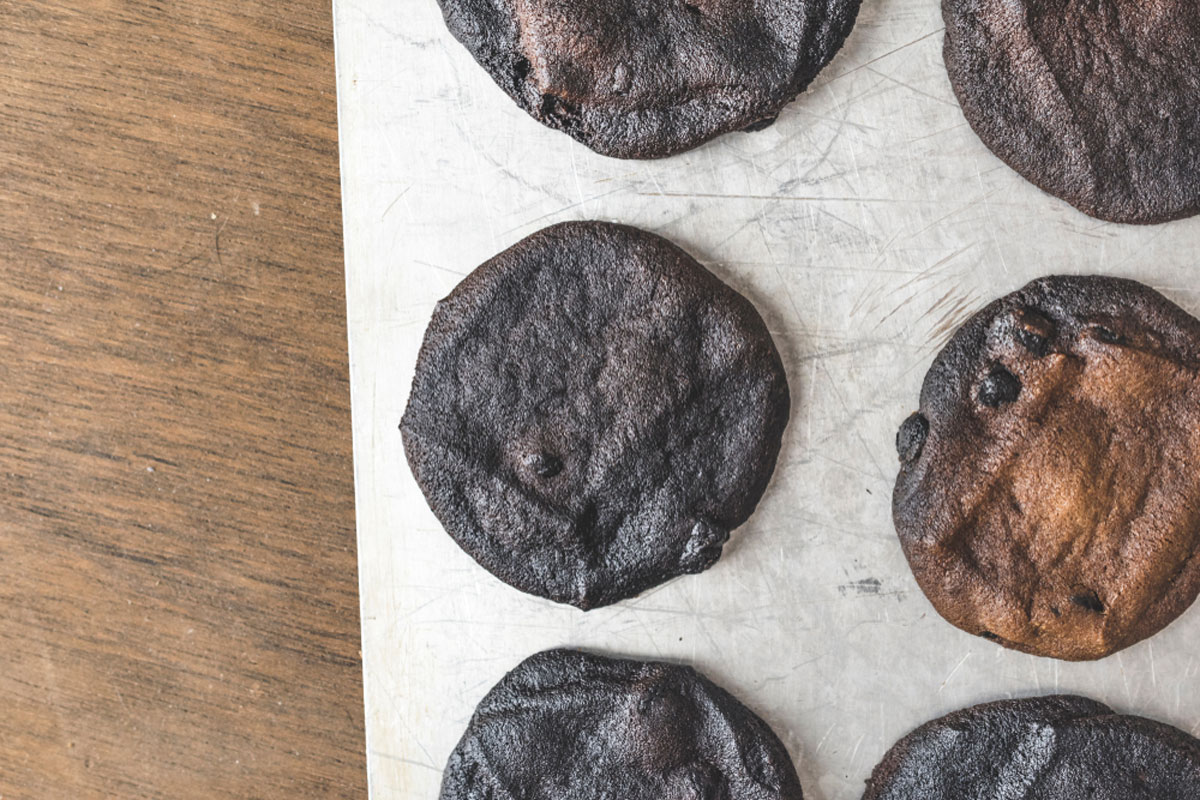Cookie baking is a beloved pastime, but even experienced bakers encounter mishaps in the kitchen. From cookies that spread too much to those that come out dry and crumbly, understanding what went wrong is key to achieving cookie perfection. Here’s a comprehensive guide to troubleshooting common cookie baking issues and how to fix them.
Cookies Spread Too Much
Nothing’s more disappointing than seeing your perfectly shaped cookie dough blobs turn into flat, pancake-like discs in the oven. Here are the common culprits:
- Causes:
- Butter was too soft or melted.
- Too little flour in the dough.
- Baking sheet was warm when the dough was placed on it.
- Over-creaming the butter and sugar introduced too much air.
- Solutions:
- Chill the Dough: Refrigerate for at least 30 minutes before baking.
- Check Your Measurements: Ensure you’re using the correct ratio of butter to flour.
- Use a Cool Baking Sheet: Let the baking sheet cool completely before adding more dough.
- Avoid Over-Creaming: Mix butter and sugar until just combined.
2. Cookies Don’t Spread at All
If your cookies come out of the oven looking like the same tight little balls you put in, there’s likely an issue with the dough’s composition.
- Causes:
- Too much flour in the dough.
- Not enough butter or other fats.
- Dough was too cold.
- Solutions:
- Adjust Flour: Use a kitchen scale to measure flour accurately.
- Soften the Butter: Ensure the butter is at room temperature before mixing.
- Warm Dough Slightly: Let the dough sit at room temperature for a few minutes before baking.
3. Dry and Crumbly Cookies
Dry, crumbly cookies are often the result of an imbalance in wet and dry ingredients or overbaking.
- Causes:
- Overbaking.
- Too much flour or not enough fat.
- Over mixing the dough.
- Solutions:
- Watch Baking Time: Remove cookies from the oven as soon as the edges are set.
- Check Ingredients: Use the exact measurements for fat and flour.
- Mix Gently: Stop mixing as soon as the ingredients are combined.
4. Burnt Bottoms
Cookies that are perfectly golden on top but burnt on the bottom can ruin the batch.
- Causes:
- Baking sheet is too thin or dark-colored.
- Oven temperature is too high.
- Cookies baked too close to the bottom of the oven.
- Solutions:
- Use Quality Bakeware: Opt for light-colored, heavy-gauge baking sheets.
- Adjust Rack Placement: Bake cookies in the middle of the oven.
- Use Parchment Paper or Silicone Mats: These provide an insulating layer between the cookies and the pan.
5. Uneven Baking
If some cookies are perfectly baked while others are underdone or overdone, it’s often due to inconsistent dough size or placement.
- Causes:
- Unevenly shaped or sized dough balls.
- Crowded baking sheet.
- Solutions:
- Use a Cookie Scoop: This ensures uniform cookie sizes.
- Space Evenly: Leave about 2 inches of space between cookies.
- Rotate the Baking Sheet: Turn the sheet halfway through baking to ensure even heat distribution.
6. Cookies Are Too Hard
Hard cookies might be great for dunking, but if that’s not your goal, you’ll need to make some adjustments.
- Causes:
- Overbaking.
- Not enough moisture in the dough.
- Solutions:
- Reduce Bake Time: Check cookies a minute or two before the recommended time.
- Add Moisture: Use ingredients like brown sugar, egg yolks, or a tablespoon of milk for added moisture.
7. Cookies Are Too Soft or Fall Apart
Cookies that are too soft might not hold their shape or could crumble upon handling.
- Causes:
- Underbaking.
- Too much fat or not enough flour.
- Solutions:
- Bake Longer: Allow cookies to bake until edges are firm and centers are set.
- Balance Ingredients: Check your recipe’s fat-to-flour ratio.
8. Cookies Stick to the Pan
If cookies refuse to release from the baking sheet, you risk breaking them apart while removing them.
- Causes:
- No parchment paper or non-stick coating used.
- Cookies cooled too long on the sheet.
- Solutions:
- Use Non-Stick Liners: Always bake with parchment paper or silicone mats.
- Remove While Warm: Let cookies cool for 2-3 minutes, then transfer to a wire rack.
9. Cookies Lose Their Shape
Detailed cookie shapes that come out of the oven looking unrecognizable are often due to spreading or poor dough preparation.
- Causes:
- Dough too warm.
- Incorrect fat-to-flour ratio.
- Solutions:
- Chill Dough: Keep shaped dough in the fridge for 10-15 minutes before baking.
- Use the Right Fat: Avoid using margarine or overly soft butter.
10. Cookies Taste Bland
If your cookies lack flavor, it’s time to revisit your recipe’s seasoning.
- Causes:
- Not enough salt or flavoring agents.
- Overusing flour, which can dull flavors.
- Solutions:
- Add Salt: A pinch of salt enhances sweetness and flavor.
- Boost Flavor: Incorporate vanilla extract, spices, or even espresso powder for depth.
General Tips for Success
- Read the Recipe Carefully: Avoid mishaps by following the instructions exactly.
- Measure Ingredients Accurately: Use a kitchen scale for the most precise measurements.
- Know Your Oven: Use an oven thermometer to ensure accurate temperatures.
- Experiment and Adjust: Baking is both an art and a science—don’t be afraid to tweak recipes to suit your preferences.
Conclusion
Cookie baking mishaps happen to the best of us, but with a little knowledge and practice, they’re easy to overcome. Whether your cookies spread too much, don’t spread at all, or come out too hard or soft, these troubleshooting tips will help you achieve bakery-quality results every time. Happy baking!

